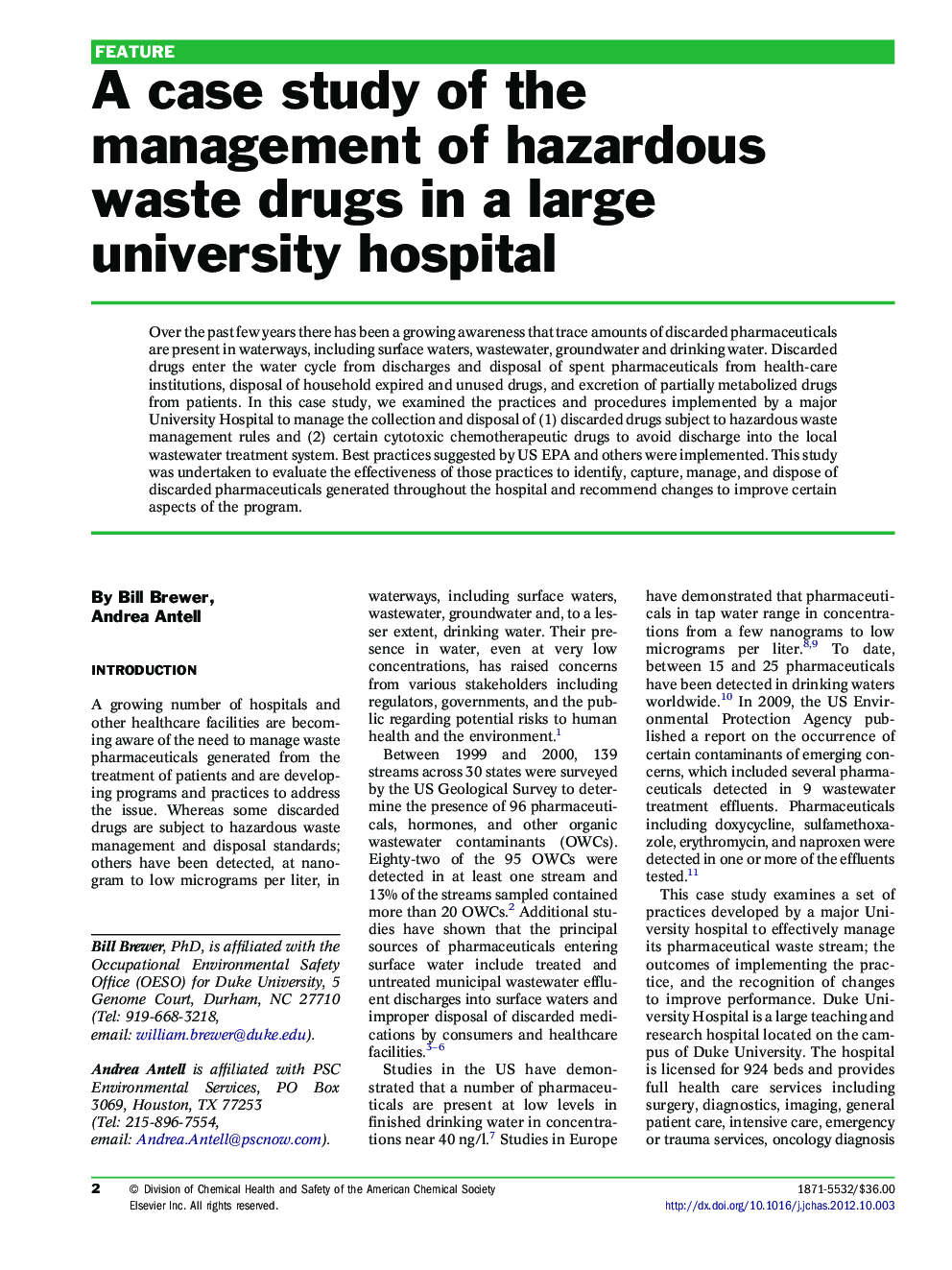| Article ID | Journal | Published Year | Pages | File Type |
|---|---|---|---|---|
| 574324 | Journal of Chemical Health and Safety | 2013 | 6 Pages |
Abstract
Over the past few years there has been a growing awareness that trace amounts of discarded pharmaceuticals are present in waterways, including surface waters, wastewater, groundwater and drinking water. Discarded drugs enter the water cycle from discharges and disposal of spent pharmaceuticals from health-care institutions, disposal of household expired and unused drugs, and excretion of partially metabolized drugs from patients. In this case study, we examined the practices and procedures implemented by a major University Hospital to manage the collection and disposal of (1) discarded drugs subject to hazardous waste management rules and (2) certain cytotoxic chemotherapeutic drugs to avoid discharge into the local wastewater treatment system. Best practices suggested by US EPA and others were implemented. This study was undertaken to evaluate the effectiveness of those practices to identify, capture, manage, and dispose of discarded pharmaceuticals generated throughout the hospital and recommend changes to improve certain aspects of the program.
Related Topics
Physical Sciences and Engineering
Chemical Engineering
Chemical Health and Safety
Authors
Bill Brewer, Andrea Antell,
